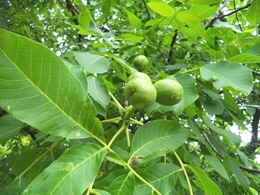Hazelnut tree care is very important to maintain the tree and obtain fresh hazelnuts. Read through this article to learn some basic tips about taking care of its plant.

Native to the temperate northern hemisphere, hazelnut is a member of the birch family of trees,
Betulaceae. They can be found growing abundantly all over North America. They are classified under deciduous trees as well as shrubs. The edible fruit, hazelnut, is used to extract oil, is available as whole or broken-shelled nuts and kernels, and is used widely in meals, butter, paste, and chocolates.
Characteristics
- This plant rarely grows more than 12 to 15 feet in height, and has a large number of shoots or trunks branching out just above ground level. This is the reason why it is more known as a bush.
- Its bark is light gray-brown, smooth initially, developing a crisscross pattern as it matures.
- The stems and twigs are stiff, light brown with red thin hair.
- The leaves are alternate, simple, and broadly oval with a rounded base.
- The color of the leaves are darker on the upper side and paler on the underside, with stiff, glandular hair. The leaves vary in length, from 2½ to 5 inches.
Pollination
For the nuts to develop, all varieties require cross-pollination. What is unusual about this tree is the way and time it cross pollinates. It flowers and pollinates in mid-winter. The wind carries pollen from the male brown flowers; catkins to red female flowers for pollination. All through spring, the fertilization takes place, and the nuts begin to develop. The nut grows, and ripens to become a brown color in late summer. The size is generally ½ inch in diameter. The edible nut is enclosed in a hairy, leaf-like husk.
Growing
These trees prefer neutral-acidic soils with pH 6.0-7.0, and they thrive in deep sandy-loam soil. The soil should be well drained, and in areas that is mostly frost free. They are winter hardy and have a broad climatic adaptation. While gardening, one should remember that for planting this shrub, get a sapling that is between 0.6 to 1.8 meters tall. Young ones are susceptible to root damage. Soak only the roots of the sapling for half an hour in a mixture of water and transplant solution. Select a sunny spot, and dig a hole large enough to hold the sapling's root system. Sprinkle a little loose soil, add some bone meal, and do a bit of composting by also adding some organic compost, and plant the sapling. Spread the roots gently, add some more soil and organic compost, and pour some water in the hole. Once the water has seeped down, fill the hole with some soil, and very lightly press it down. This planting process is to be followed to increase the survival and growth rates of the saplings by proper care.
Taking Care
After planting, to ensure its establishment, prepare for mulching. Mulching will inhibit weed growth and keep the sapling moist. Place the ½ feet thick mulch around the sapling, covering a one-meter circle, and ensure that the mulch does not touch the stems. Choose from different types of mulch; straw, bark, wood, etc. Water frequently to ensure a good root system. A very small and minimum fertilizer application in the first year will make the plant winter hardy. Older saplings will do well with a 10-10-10 fertilizer application three to four times in a year.
With good hazelnut tree care, your tree will produce its first fruit within three or four years. Although winter hardy and drought resistant, make sure you give it plenty of care and attention.






 Native to the temperate northern hemisphere, hazelnut is a member of the birch family of trees, Betulaceae. They can be found growing abundantly all over North America. They are classified under deciduous trees as well as shrubs. The edible fruit, hazelnut, is used to extract oil, is available as whole or broken-shelled nuts and kernels, and is used widely in meals, butter, paste, and chocolates.
Native to the temperate northern hemisphere, hazelnut is a member of the birch family of trees, Betulaceae. They can be found growing abundantly all over North America. They are classified under deciduous trees as well as shrubs. The edible fruit, hazelnut, is used to extract oil, is available as whole or broken-shelled nuts and kernels, and is used widely in meals, butter, paste, and chocolates.